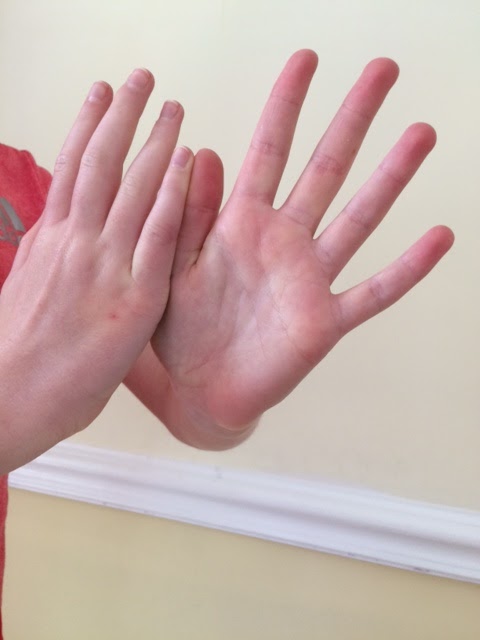On my travels on trains and on station platforms I sometimes see deaf people signing to each other. I’ve been a teacher of deaf children and used to sign all day every day, so although I’m a bit rusty I try to understand what the people are saying to each other. I find it fascinating to watch because it’s so dynamic and witty. In sign language you have to use the right facial expression to go with the meaning. So if you sign “sad” you have to really look sad. Until you learn how to do it yourself it can look a bit exaggerated. In British Sign Language (BSL) the signs for “London” and “noisy” are the same – you have to go by the lip pattern, the context, and of course for “noisy” the person will wince as they sign it.
There are about 200 different sign languages worldwide, because they’ve developed separately in each country, just like spoken languages. To sign “woman” in BSL you brush your finger against your cheek, whereas in French Sign Language (LSF) you pinch your earlobe. So in BSL a woman is seen to have a smooth cheek and in LSF she has an earring! Some signs, like “eat” and “drink” are the same; you just imitate the actions. Even American Sign Language (ASL) is different from BSL, whereas the spoken languages are the same (well, almost).
All sign languages have similar grammatical structures. The main idea – the thing you want to emphasize – always comes at the beginning of the sentence. Question words come at the end. So “What’s your name?” becomes “Name you what?” Adverbs of time are marked by position of the gesture in relation to the person’s body, so for example to say “yesterday” you point behind your shoulder. “Placement” of your signs is important as you have to set the scene for what you’re talking about.
Deaf people give each other a “signed name”, a visual name linked to their interests or appearance, maybe imitating playing a sport or indicating their hair cut or glasses.
I’ve heard that after a couple of hours together, British deaf people and French deaf people (for example) can understand each other, because of all these similarities. And unlike most hearing people they’re not afraid of using gesture and facial expression to make themselves understood.
As a hearing person, you can usually find a course in your local area if you want to learn sign language. City Lit in London runs lots of courses, starting at beginner level. Some basic courses are available online. I’ve always found that hearing kids love to learn to sign, especially “signed singing” – lots of fun songs for young children already have actions to accompany them, and kids are less inhibited than adults. “Baby signing” uses basic signs taken from BSL, but it’s used completely differently and merits another blog post. I used baby signing with my daughter; we kept some of it going and she can still use the fingerspelling alphabet and some signs. We don’t know any signing deaf people at the moment but it’s proved useful when she’s wanted to talk to me from the other side of a swimming pool!
I took these photos of some random signs. I’m only showing the hands, so I had to choose signs where the facial expression was not so important.
People queuing up (probably with a frown if, like me, you don’t like queuing):

Friends (with a happy face if it’s something positive):

Forget (2 parts, showing that you lose something from your head):


In the first photo you’re holding something in your head, and in the second one you’re letting it go. The facial expression to go with the “forget” sign would be like the emoji with the rolling eyes!
You can read some more of my blog posts about signing here: Sign Language: why did the chicken cross the road? Fingerspelling: how to sign the alphabet onto your hand and Sign Language: should hearing children learn BSL?
Leave a Reply